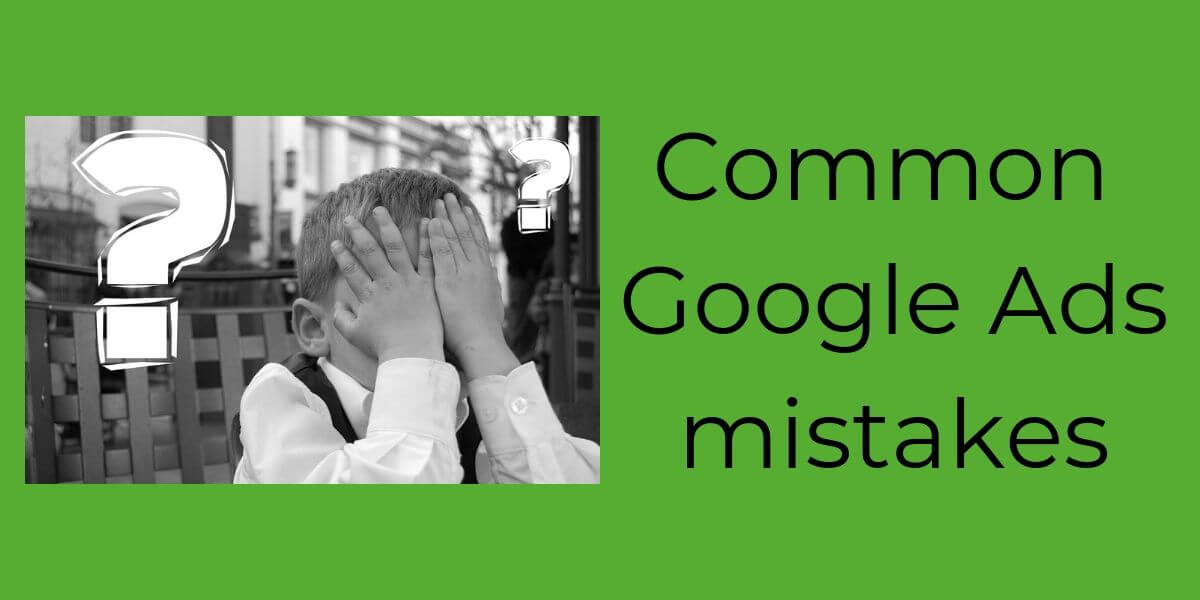Common Google Ads mistakes
So, you’re new to Google Ads and you have set up your first set of campaigns; from start to end.
You’ve selected your keywords, written your ads and you’ve entered your credit card details. What could possibly go wrong?
Now comes plenty of emotion; feelings of accomplishment, anxiety, nervousness, and to some degree, fear.
And if it comes to light that you did make some mistakes, well guess what …that means you are human, and we make mistakes.
Most common Google Ads mistakes
Advertising without understanding profit margins
Advertisers must understand their profit margins to be able to measure the performance and properly optimise their campaigns.
Smart advertisers take time to work out the lifetime value of a new customer to work out how much they can afford to spend to acquire a new customer.
Be clear on exactly how much you can afford to pay for a lead and understand the percentage of leads that your team converts to sales.
Directing to the home page
Another mistake regarding post-click landing page relevance is directing users to your website’s homepage, instead of the specific web page.
This is quite common amongst e-commerce businesses. Even though the relevant web page can be navigated to from the home page, directing users to the home page will still damage your quality score.
Minimal Use of Extensions
Most beginners are aware of the sitelink extension, which allow people to be taken to specific pages on your site.
Ad extensions, in a nutshell, are features that allow extra business information to be shown with your ad and make specific actions easier to complete.
This information could be a phone number, an address, store rating, or even more webpage links (such as the above sitelink extensions)

Not Using Keyword Match Types
You get to decide which keywords you want to target for your ads. You’re also given control over how your keywords match to the terms people are searching for on Google.
This is keyword matching and there are 5 types of matching you need to know: broad match, broad match modifier, phrase match, exact match, negative match.
BROAD MATCH
As the name suggests, broad match gives you the broadest (or greatest) coverage for a particular keyword.
It tells Google to show your ads for that particular keyword, but will also show your ads on similar and related keywords too.
BROAD MATCH MODIFIER
This match type gives you slightly more precise targeting compared to a straight broad match keyword.
You take a broad match keyword and you specify the important words that you want to closely match when people are searching.
PHRASE MATCH
Next is phrase match where you place quote marks around your keyword, for example “chocolate gifts”.
This tells Google Ads that you want to display your ads to people searching for those words and in that particular order.
EXACT MATCH
Exact match keywords act as the name suggests and exactly match to the terms people are searching.
The exact match keyword [chocolate gifts] won’t display your ads to people who include something before or after the keywords.
NEGATIVE MATCH
Negative match needs to be used in combination with the other (positive) match types we’ve already covered.
They prevent your ads from being shown when particular terms are included in what people are searching. Using negative match keywords is especially important when using the default broad match.
Short conclusion
Remember that the key to success with Google Ads is to consider the relationship between these three critical elements – the keyword you are targeting, the ad that you are displaying and the landing page you are sending people to.
The better the relationship, the better the performance of your campaigns.
